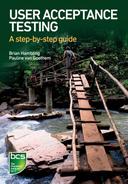0%
23Chapters
0-1Hours read
0kTotal Words
Book Description
Every information system brought into service in every type of organisation requires user acceptance testing. It is by far the most common activity carried out by non-IT specialists. This book is designed to be a hands-on manual for non-testing specialists to plan and carry out an effective acceptance test of an information system. It provides a structured and step-by-step approach to effective acceptance testing and identifies ways of making the process as simple and cost-effective as possible. --
'As someone who started his career in testing by being told to leave the comfort of my data processing team to UAT a new system I know how hard it is to understand what is required of UA testers as to date there has been very little written or provided to help. This book comfortably fills the void that exists to help UA testers understand their role and the many tasks they have to undertake.' Geoff Thompson, Consultancy Director at Experimentus and Chair of the UK Testing Board -- 'A UAT guide for users: that is a novel thought! This fills a gap in my bookshelf, a volume I wish I had years ago. It would have helped me to help the business. But more than that: it would have helped business users to help themselves, and see that UAT is more than just a necessary evil, but has clear purpose, methods, goals and skills. This is a step-by-step guide that is clear and praiseworthy. You never know, it could be a recruiting arm for professional testers in the future, brought in from the business.' Peter Morgan, Testing Practitioner -- '...a really excellent book; well written, carefully structured and in a format that makes it easy to read and understand the topic. [...] an absolute must-read for anyone involved in systems development.' A P Sutcliffe, PG Dip CCI MBCSTable of Contents
- Front Cover
- BCS, The Chartered Institute for IT
- Title Page
- Copyright Page
- Contents
- List of figures and tables
- Authors
- Introduction
- 1. The Importance of Uat
- 2. Business Requirements
- 3. Testing Basics for UAT
- 4. The UAT Team
- 5. UAT as Transition
- 6. Preparing for UAT – Planning
- 7. Test Design for UAT
- 8. Implementing the Tests
- 9. Evaluating the System
- How do we decide whether or not to accept a system?
- When the testing has to stop
- The risk of release
- Measuring the risk of release
- Defining and evaluating emergency-release criteria
- Decision process for evaluating UAT results
- Test summary report conclusions
- The final release decision
- Chapter summary
- 10. Life after UAT
- Appendix A UAT Checklists
- Appendix B Answers and Comments
- Appendix C UAT Training
- References
- Back Cover
